The Train Market, MaeKlong Station/RAM Explained


Quick Click Links
Feature Photograph The Train Market, Maeklong Station RAM Explained
Photography News of Interest
Readers Submissions Readers Questions A Snapshot of Bangkok Images Week in Review
I
nfocus Blog, Winter TimeT
Feature Photograph *menu

Canon 5d Mark II, 24-70mm F2.8L USM @F8 1/80th 70mm ISO 400
Oh my, you’re wondering what’s so great about an ice chipping machine? Okay, I’ll tell you. Recently while out with a friend taking pictures I pushed my camera at him and asked him to snap a few shots of an ice machine I saw being used in a small dark and dirty soi. Something had caught my eye.
It wasn’t just that the ice cubes sitting on the dirty ground were being lifted into the machine by an equally dirty guy, or the finished processed ice was being emptied into an equally dirty laundry basket. That was part of it. Let’s take a closer look.

Canon 5d Mark II, 24-70mm F2.8L USM @F8 1/80th 70mm ISO 400
Anyone care to think what viruses and bacteria black mold can carry other than Legionnaires’ Disease, Influenza, MRSAs, Foot and Mouth Disease, Avian Influenza, and the plague? Itemizing the full list will keep you busy for months.
At first you’d think.. “well, they’ll use the ice for keeping fish cold” and you’d be partly right. This won’t keep such viruses from being passed on through the fish though. And it might make your stomach churn a bit when you see one of these baskets of ice being carried into the same place you just ordered a Coke and ice from..

Canon 5d Mark II, 24-70mm F2.8L USM @F8 1/125th 70mm ISO 400
The Feature Photo is significant because it shows you how paying attention to your environment can reveal such significant finds. Usually, a few hundred people being sick with diarrhea in Thailand doesn’t get much mention, much less the health department looking into things. But this breeding environment for the worst viruses could just as easily be a much more serious public health risk.
Looking at the thick live black mold sticking to the out chute and ice rushing over it, you’d think “Why doesn’t someone just clean it..” Probably because cleaning doesn’t result in a profit. No one cares enough about the food they serve to their customers to ensure health standards are meant. They don’t care because they’re not held liable. Not civilly and not criminally. They don’t care because the average consumer hasn’t learned to care.
At the very least think about this next time you ask for ice.. I assure you, this machine is not the exception. If you read up on the subject, dirty ice accounts for a good portion of the food poisonings and other serious ills which inconvenience travelers across the world. Drink it warm if you must.
Train Market, Maeklong Station
*menu
A few years ago when it went viral on YouTube skeptics doubted the Train Market was real, thousands opined it was some sort of sham to fool the public. The skeptics must have never visited Thailand. The Train Market at Maeklong Station is indeed real, a thriving street market laid on top of railroad tracks which are stripped back, or ‘rolled up’ seven times a day (starting at 0840 and continuing to 1740) as the train rolls into Maeklong Station to drop its passengers, take on new passengers, and heads back the way it came. You see, Maeklong Station ends just meters from the Mae Klong tributary. It can’t go any further, so the train is configured to be driven in both directions. It just heads back the way it came.
Many travel there by train or other public transportation, but I traveled there by private car and the GPS coordinates are N 13.407676 E 99.998078
Parking is difficult to find, but if you head towards the ‘river end’ of Maeklong station you’ll find some parking right alongside the river.
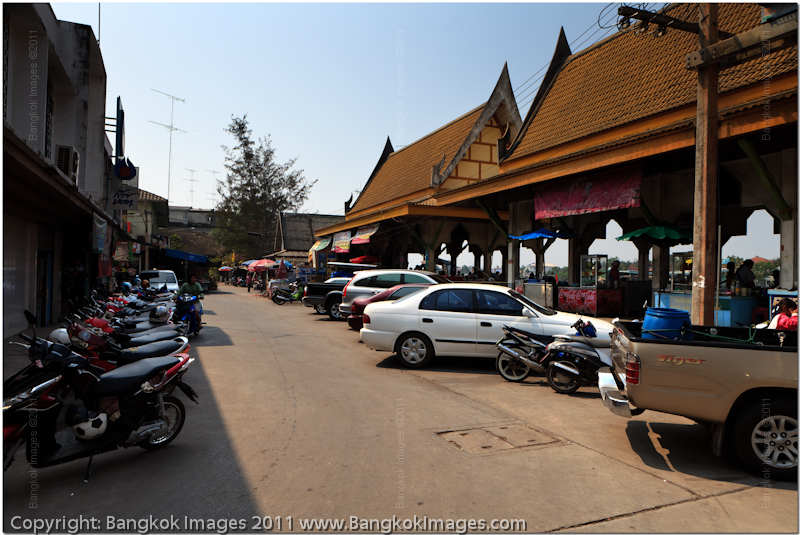
Canon 5d Mark II, 24-70mm F2.8L IS USM @F8 1/200th 24mm ISO 100
The river itself is worthy of your time from a photographic standpoint. After parking, spend a few minutes looking over the river. Weathered wooden docks and old style boats lend themselves nicely to vintage post processing.
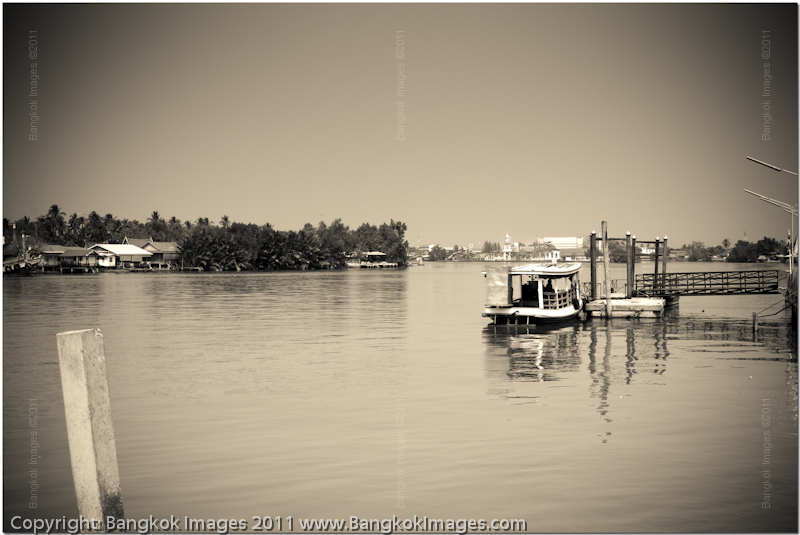
Canon 5d Mark II, 24-70mm F2.8L IS USM @F8 1/250th 42mm ISO 100
Across the river you’ll see this mosque with elaborate docks. Thai fishing boats parked alongside provide interesting contrast.
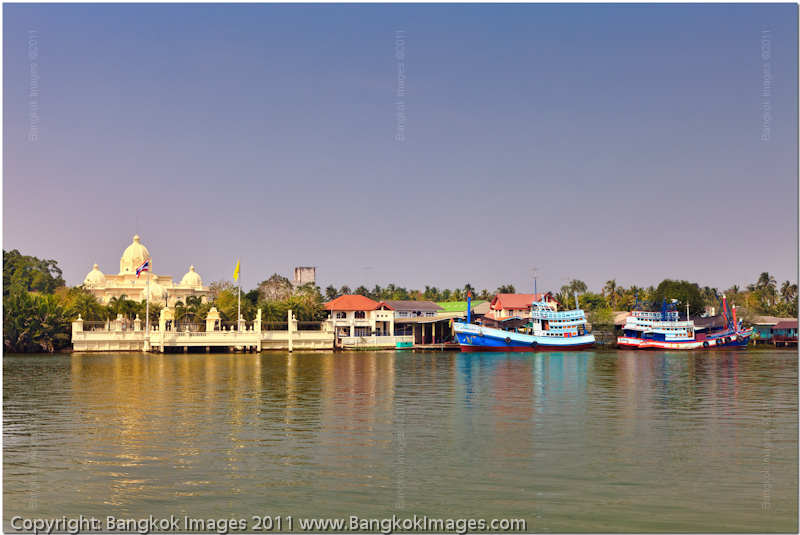
Canon 5d Mark II, 24-70mm F2.8L IS USM @F8 1/320th 46mm ISO 100
While the market is busy and bustling, the streets adjacent to the market are relatively slower paced.
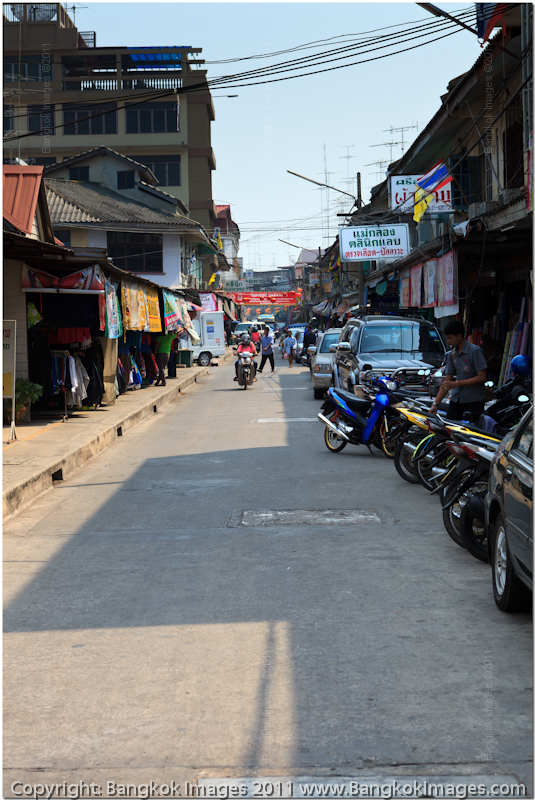
Canon 5d Mark II, 24-70mm F2.8L IS USM @F8 1/160th 70mm ISO 100
Color is the order of the day. Everywhere vibrant colors are evident in the food, products, and local decorations.
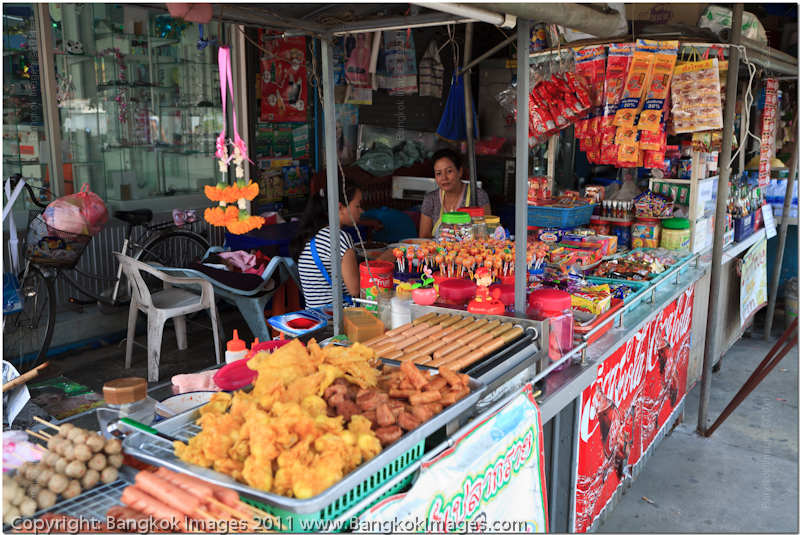
Canon 5d Mark II, 24-70mm F2.8L IS USM @F4.5 1/25th 34mm ISO 100
This is the end of the line. The tracks lead right up to the red barrier and the track marker to the left gives the position. A couple sits on the edge of the klong in quiet conversation.
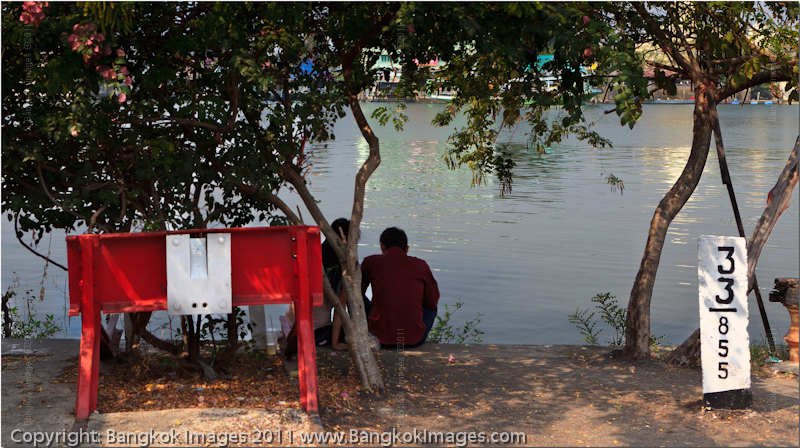
Canon 5d Mark II, 24-70mm F2.8L IS USM @F4.5 1/320th 40mm ISO 100
This is the entrance to the MaeKlong Station from the klong side looking out towards where the market begins. As you can see, it’s an active railroad station and not set up as a tourist draw like many think.
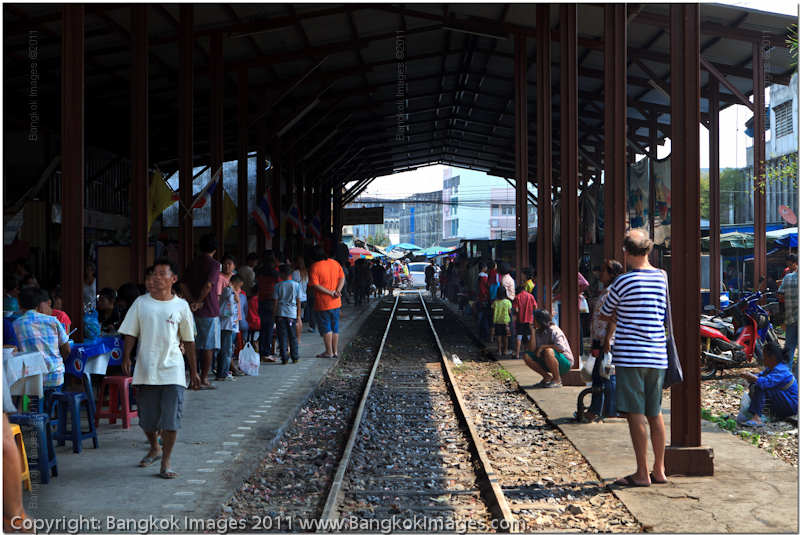
Canon 5d Mark II, 24-70mm F2.8L IS USM @F9 1/40th 70mm ISO 100
This is from the market end of the station looking towards the klong end.
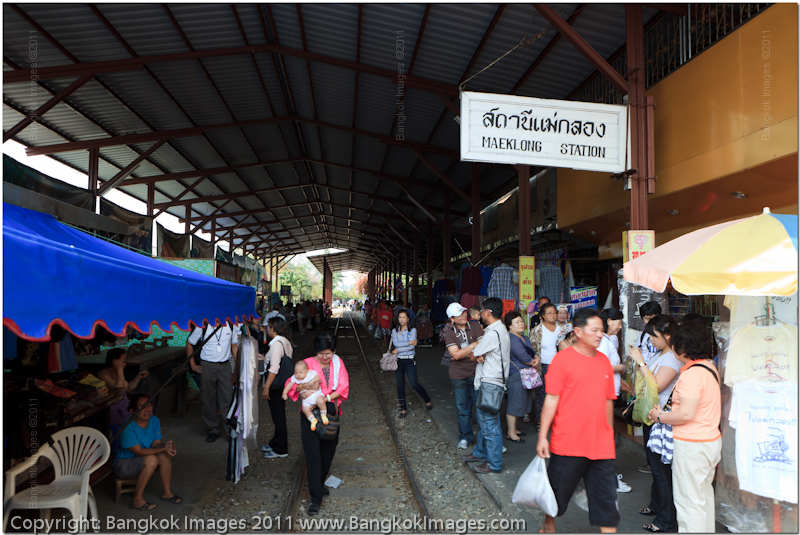
Canon 5d Mark II, 24-70mm F2.8L IS USM @F5.6 1/40th 70mm ISO 100
As you enter the market you immediately notice the very low awnings which forced me to duck my head almost the entire way through. The tracks are visible as the man walks between them, with all types of vegetables and goods along the tracks. Not much room to navigate and/or get out of someone’s way.
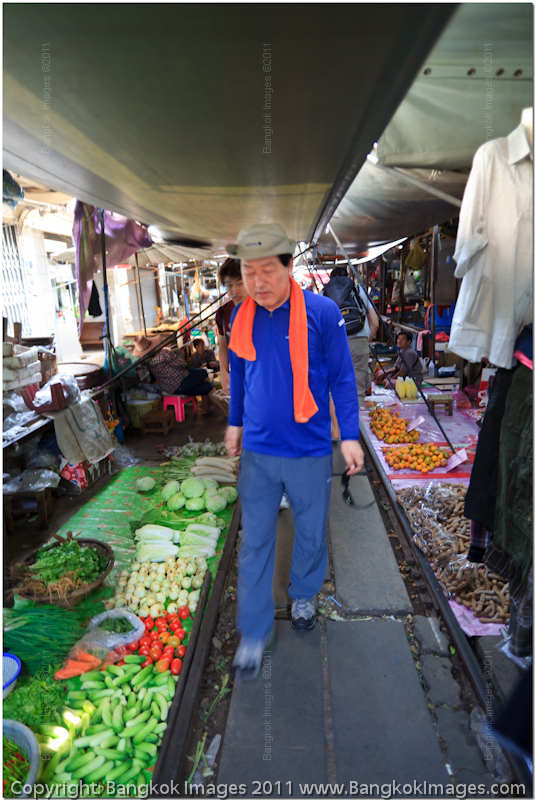
Canon 5d Mark II, Sigma 20mm F1.8 EX DG @F2.2 1/15th ISO 100
The further in you go, the darker it gets. The dim light presents a challenge from a photographic standpoint, as does the dense environment. My 20mm F1.8 Sigma lens turned out to be perfect for this environment, though it does tend to make the area seem larger than it really is.
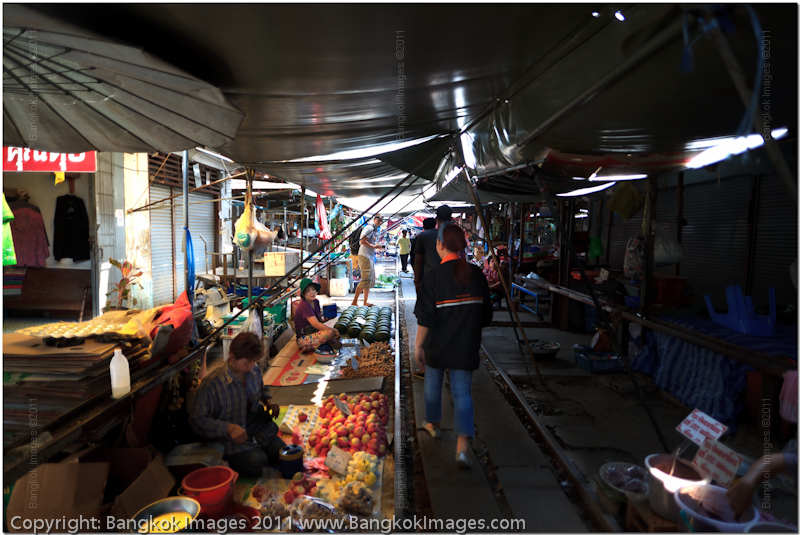
Canon 5d Mark II, Sigma 20mm F1.8 EX DG @F2.2 1/60th ISO 100
You’ll immediately notice most of the interesting photo opportunities are at ground to waist level. If you have an articulating LCD you’ll have a distinct advantage when framing your compositions. If not, I hope you’ve developed a decent “from the hip” technique because that’s what I had to use for most every capture. No one is willing to wait for you to take a photo, they’ll push you right out of the way, so make your settings before you get to the scene, and then briefly stop just long enough to shoot from the hip.
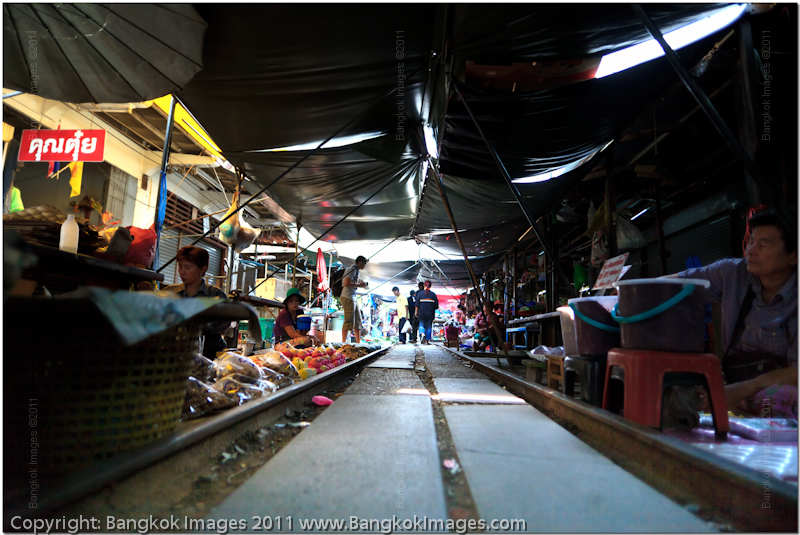
Canon 5d Mark II, Sigma 20mm F1.8 EX DG @F2.2 1/160th ISO 100
Raw meats are available in the market, none of it on ice and most of it is pork. The lady will toss what you want on the scale, drop it in a plastic bag, and now the risk is yours. Even on this relatively cool winter day the temps at this meat stand exceeded 35-36c.
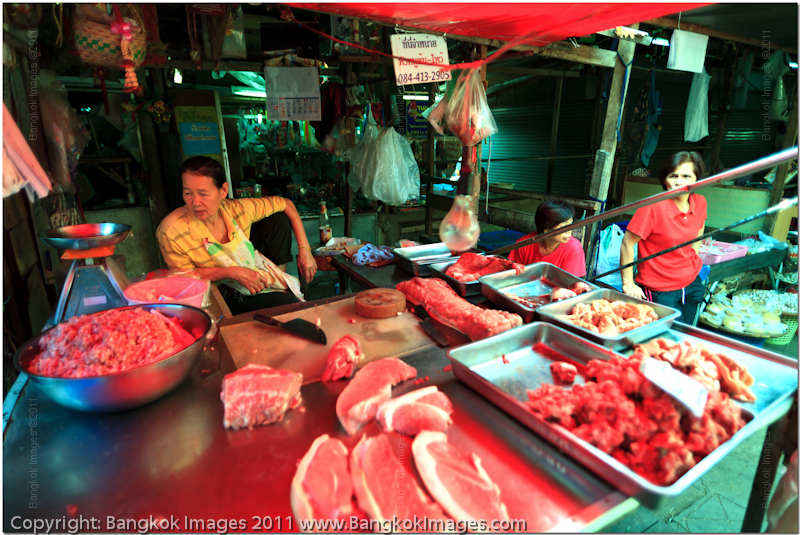
Canon 5d Mark II, Sigma 20mm F1.8 EX DG @F2.2 1/80th ISO 100
Most everyone here is Thai, thankfully it’s not yet a top tourist attraction. You’re still someone to watch. We saw 4-5 other westerners, all there to photograph the train coming through.
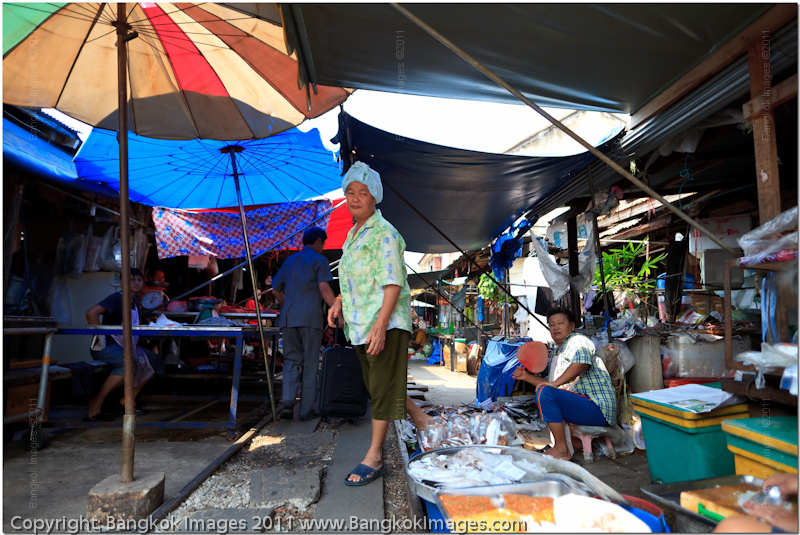
Canon 5d Mark II, Sigma 20mm F1.8 EX DG @F2.8 1/320th ISO 100
You can help but love the children. They try so hard to get your attention and impress you. I’m not sure what this young boy was selling, but he was all smiles.
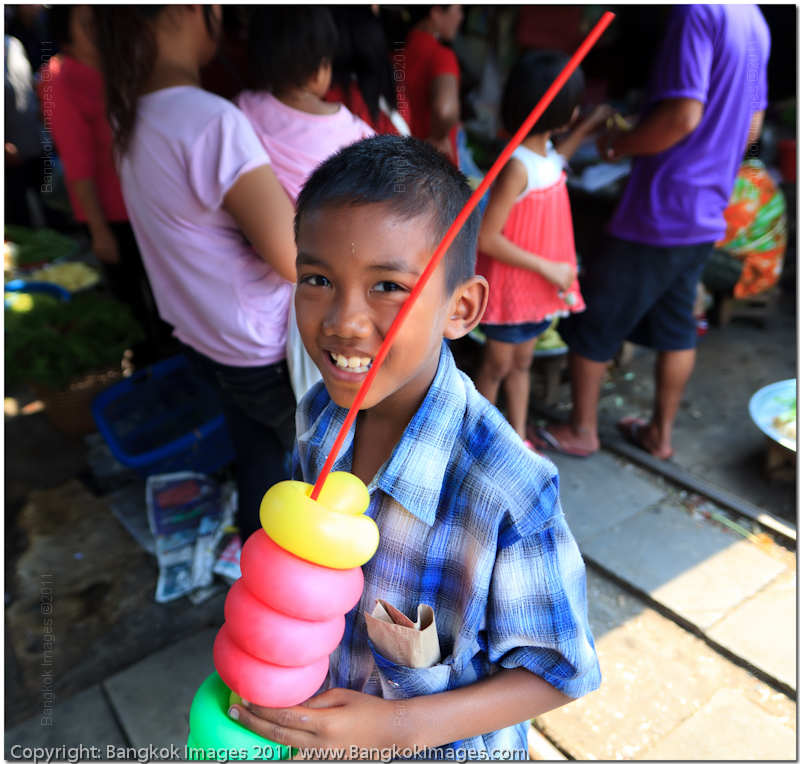
Canon 5d Mark II, Sigma 20mm F1.8 EX DG @F2.8 1/125th ISO 100
As is most Thai markets, most of the food processing is done onsite.
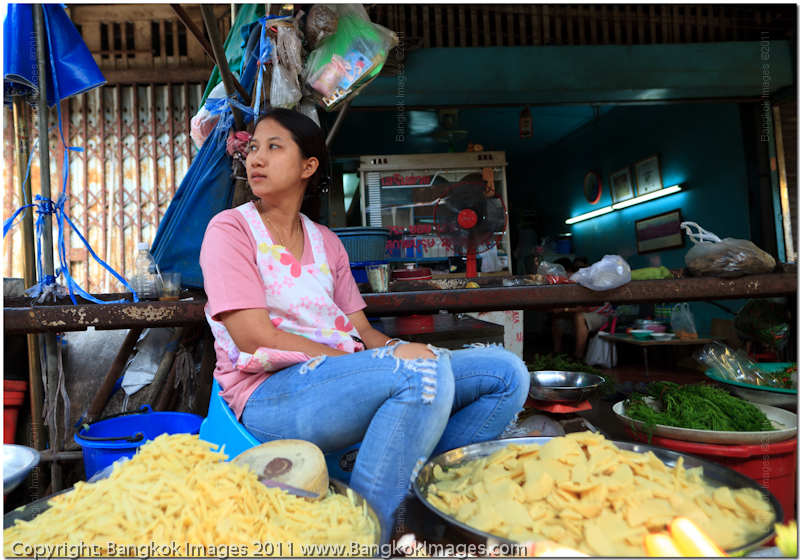
Canon 5d Mark II, Sigma 20mm F1.8 EX DG @F2.8 1/60th ISO 100
Being close to the fishing boats there was a lot of fish for sale. This lady took pride in having her fish all laid out nice and neat in a uniform manner.
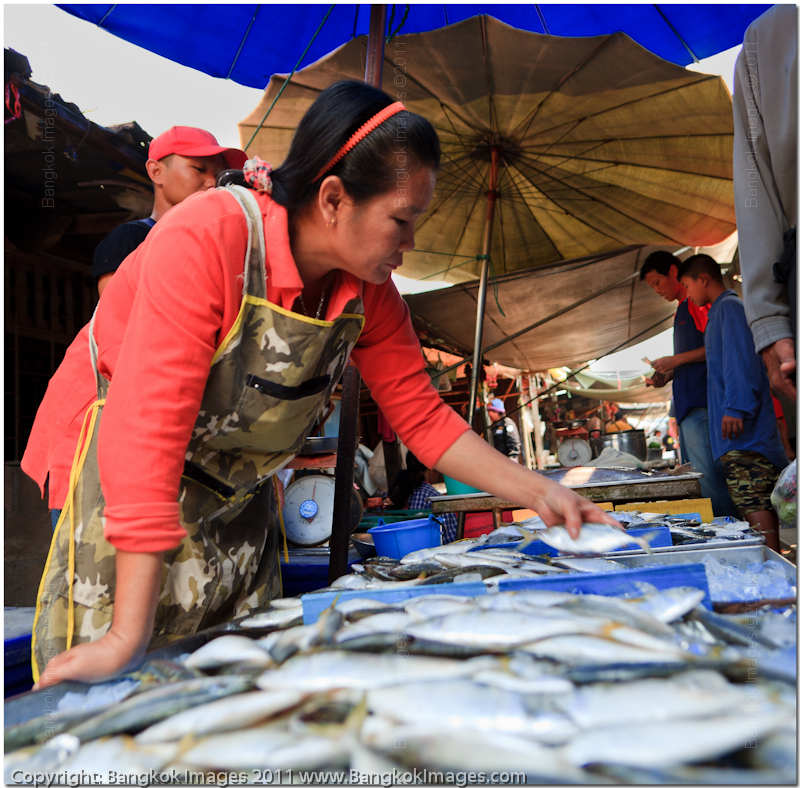
Canon 5d Mark II, Sigma 20mm F1.8 EX DG @F2.8 1/100th ISO 100
Small alleys provide access from the adjacent streets where you can find an easy exit or quick access.
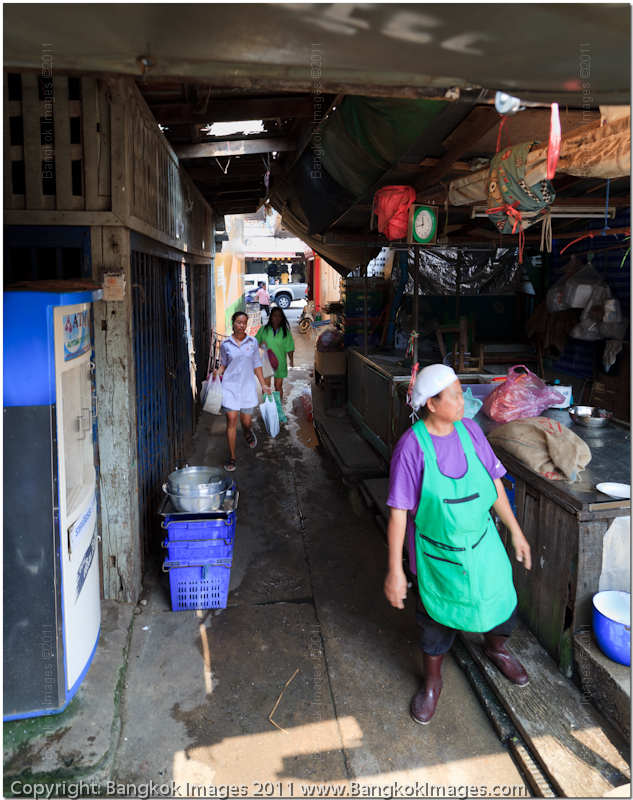
Canon 5d Mark II, Sigma 20mm F1.8 EX DG @F5.6 1/20th ISO 100
No Thai street market would be complete without a chili stand. Chilies of all types, sizes, and colors are available.
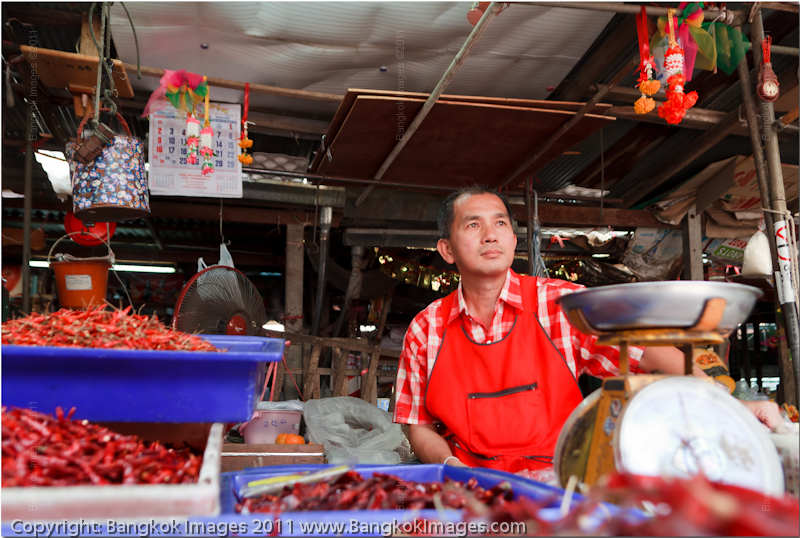
Canon 5d Mark II, Sigma 20mm F1.8 EX DG @F2.8 1/30th ISO 100
And where you have chilies, you’ll find chili paste and other processed chilies. The air is so thick with chili powder and fragrance I could feel my throat tightening and threatening to cut off my air supply.
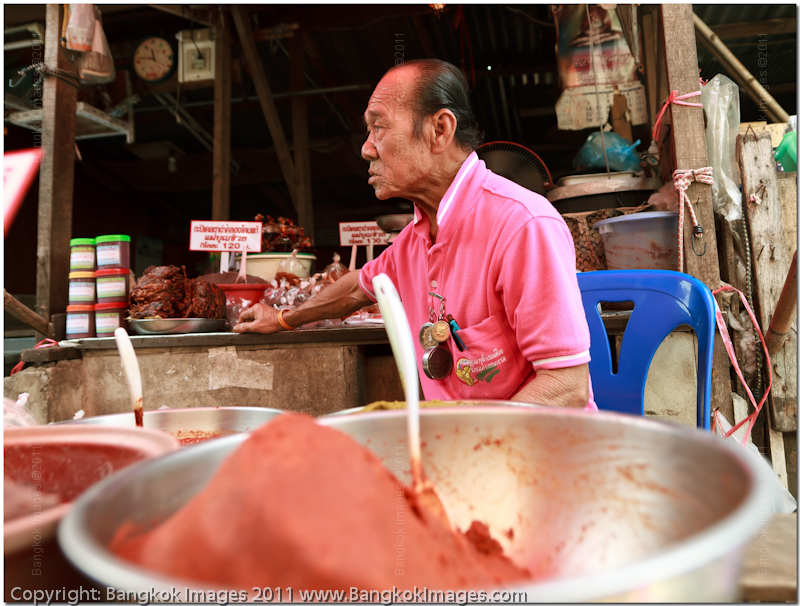
Canon 5d Mark II, Sigma 20mm F1.8 EX DG @F2.8 1/160th ISO 100
Some fish resellers appear to specialize. His specialty is big fish. His table is clean with a mirror like finish.
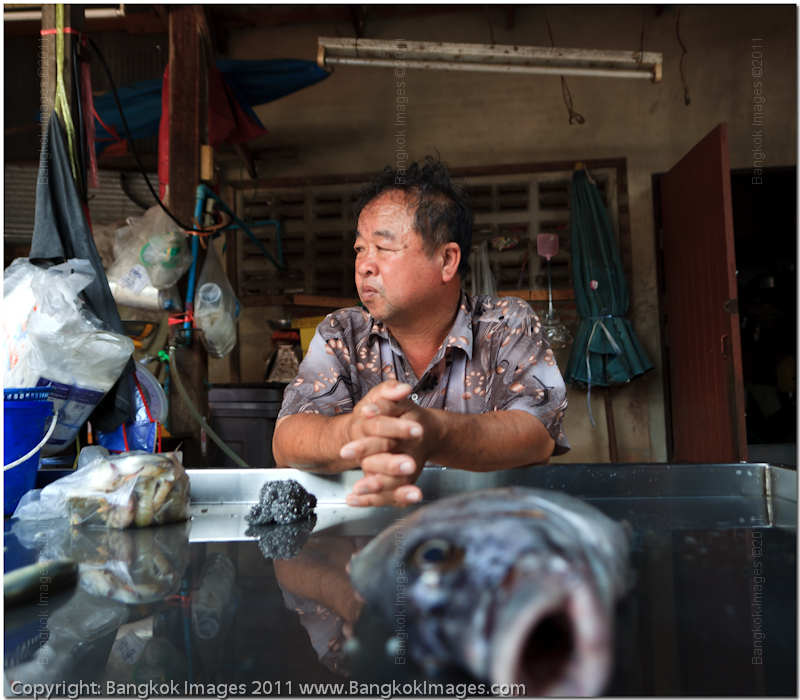
Canon 5d Mark II, Sigma 20mm F1.8 EX DG @F2.8 1/80th ISO 100
Here you can get a feeling for how low the awnings are, and how close to the tracks the products are located. See the few awnings going up? They can hear the train in the distance, it’s almost here.
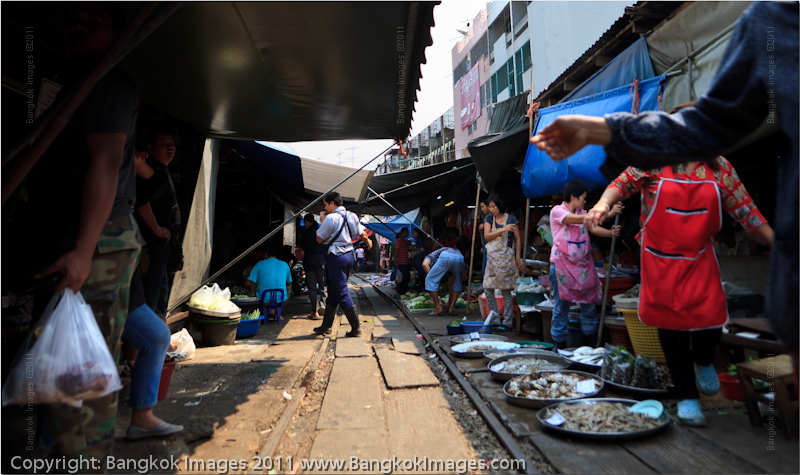
Canon 5d Mark II, Sigma 20mm F1.8 EX DG @F2.8 1/640th ISO 100
You’ll meet fellow photographers along the way. We stopped and chatted a few minutes with this guy and his wife who came here just to photograph the train coming through.
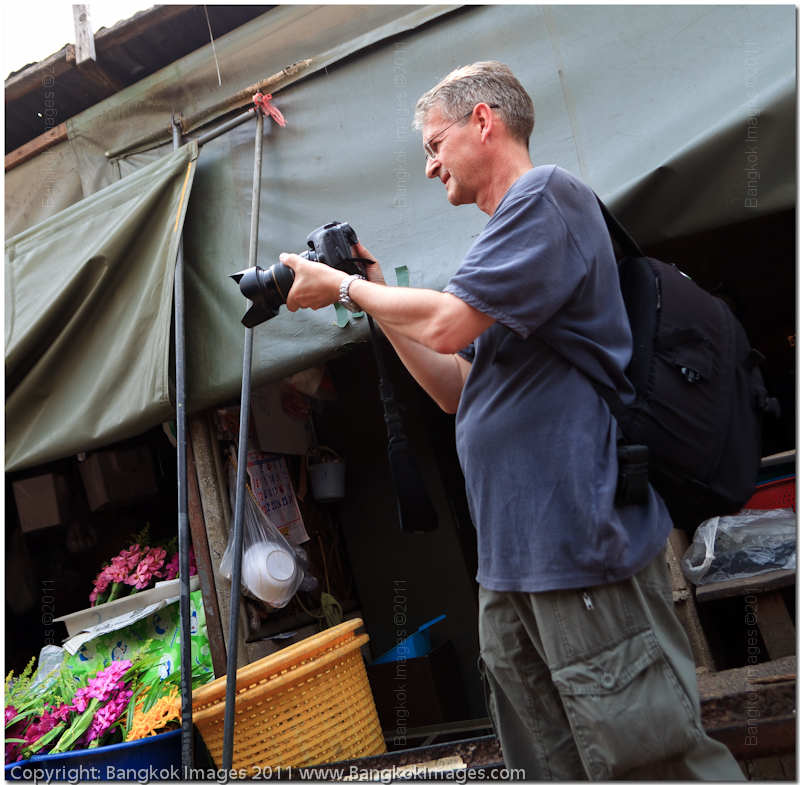
Canon 5d Mark II, Sigma 20mm F1.8 EX DG @F2.8 1/320th ISO 100
With the train almost here awnings are being pulled in and the merchants start warning you to find a hole off the tracks. They are genuinely concerned for your safety and do their best to warn and protect you.
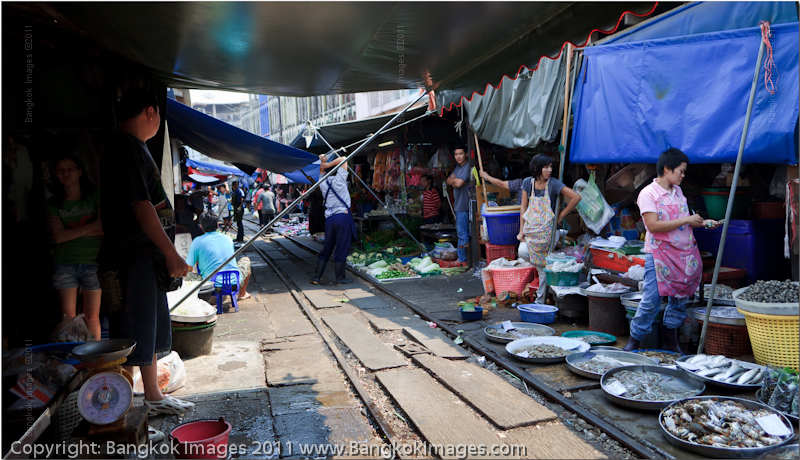
Canon 5d Mark II, Sigma 20mm F1.8 EX DG @F2.8 1/400th ISO 100
These people took refuge in the back of a shop. I’m standing on the track and they’re laughing at me, trying to warn me to get off the track. A train is coming!
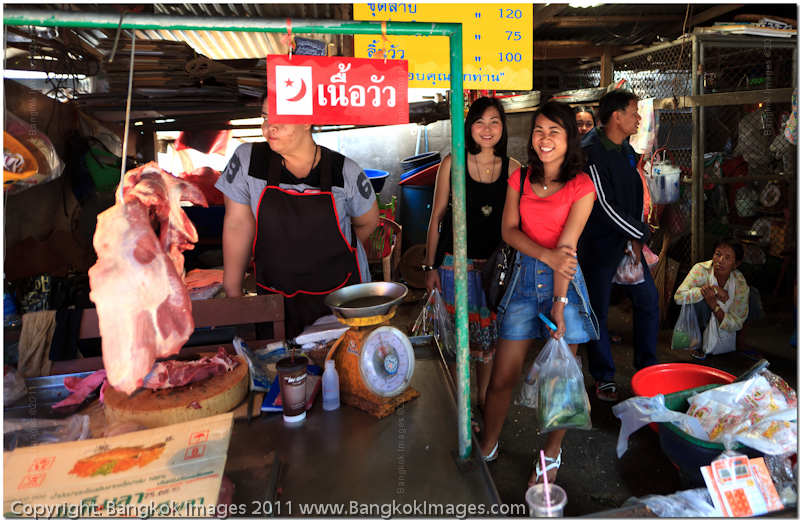
Canon 5d Mark II, Sigma 20mm F1.8 EX DG @F2.8 1/25th ISO 100
Their eyes are glued to the track, they don’t want to miss the train. They can hear it coming.
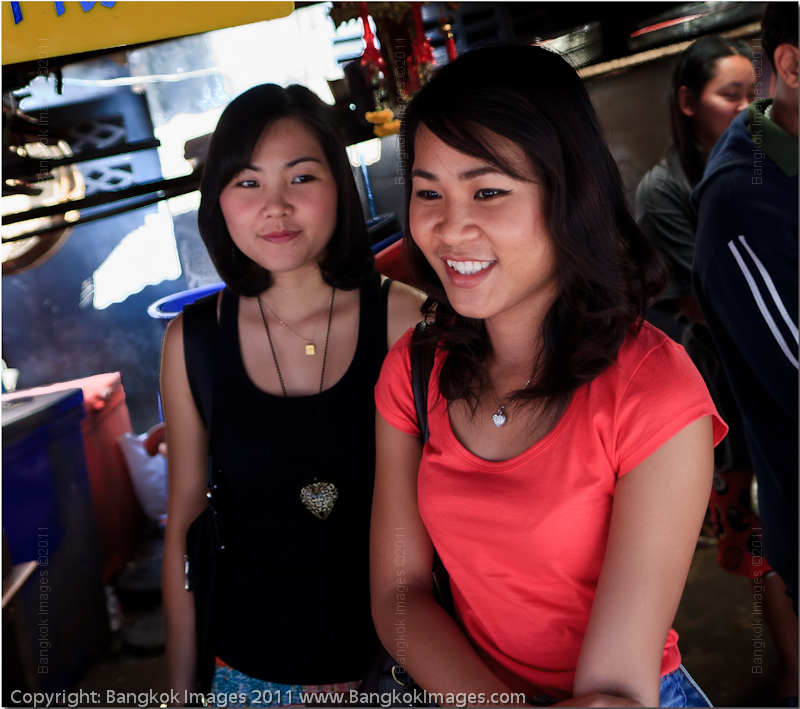
Canon 5d Mark II, Sigma 20mm F1.8 EX DG @F2.8 1/30th ISO 100
This is my first glimpse. It’s difficult to take pictures when they’re almost tackling you to take you inside to a safe location. NO NO I argue, I want to take pictures. An understanding shop owner understands and lifts my considerable bulk to a safe location keeping one arm around me, and another arm around a support in his shop. He leans me out to get the pictures I desire and at the last moment he pulls me in to safety. Talk about trusting your fellow man!
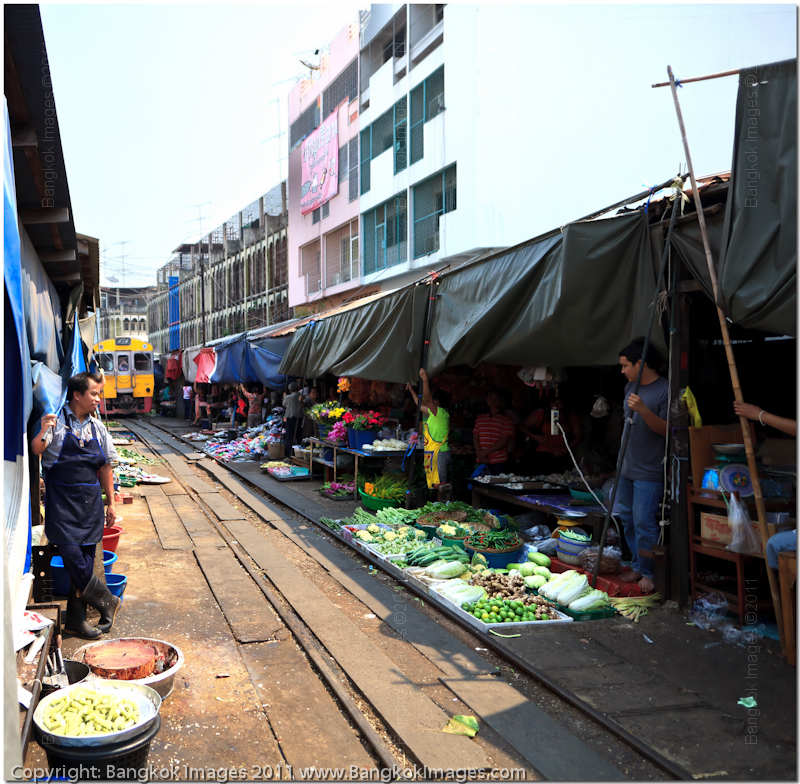
Canon 5d Mark II, Sigma 20mm F1.8 EX DG @F2.8 1/1250th ISO 100
Remember, this is a 20mm lens which means this train is less than 1.5 meters from me as I get my last capture. Notice the small girl taking pictures of the people taking pictures.. J
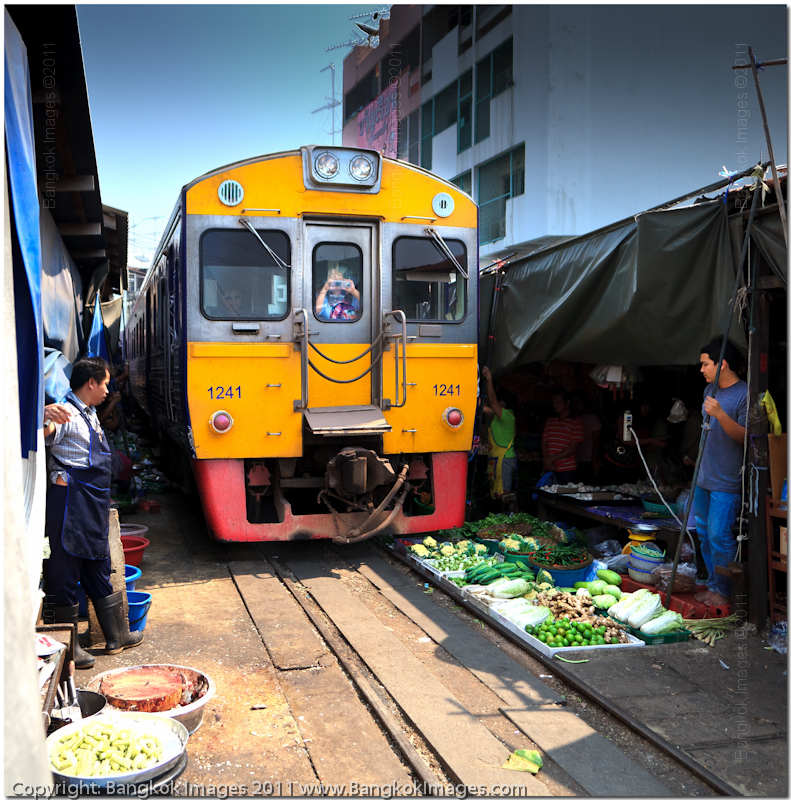
Canon 5d Mark II, Sigma 20mm F1.8 EX DG @F2.8 1/1250th ISO 100
In moments the train is rushing past and the Thai shop owner has a firm grip on me from behind. He leans me out as far as I can go and I slip my camera between the shops and the train, once again “shooting from the hip” to get my captures. Notice the small boy looking at me? He probably thinks all farangs are crazy.
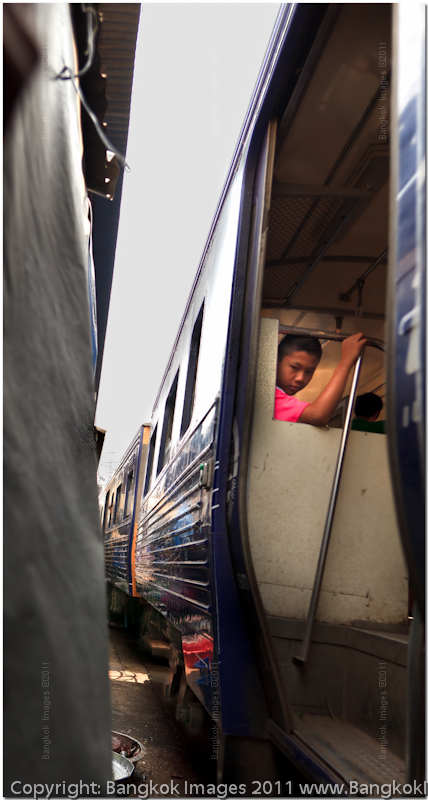
Canon 5d Mark II, Sigma 20mm F1.8 EX DG @F2.8 1/400th ISO 100
I’m still doing my best to make interesting captures as the passengers look on. Notice there’s not much room. Also, notice the small bowls on the ground which the train is passing over.
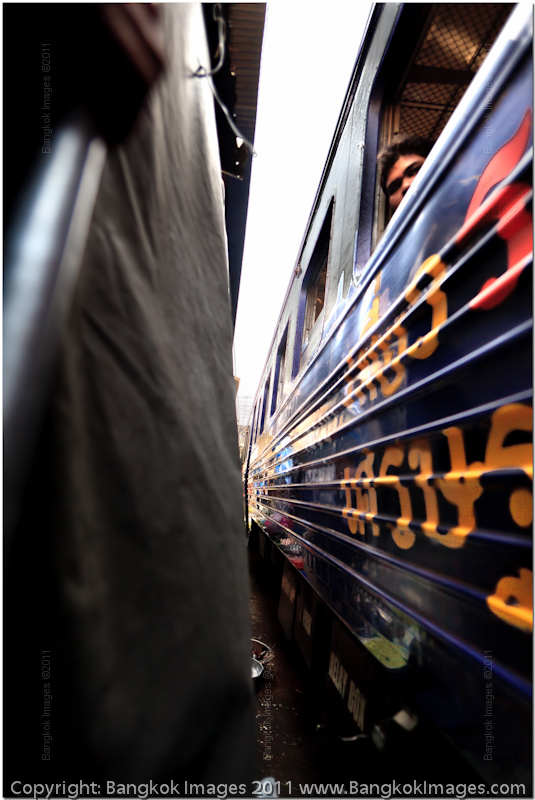
Canon 5d Mark II, Sigma 20mm F1.8 EX DG @F2.8 1/640th ISO 100
It’s almost a content to see who can put their awnings back in place mere seconds after the train goes by. I’m still being held from certain death by my Thai host who I can now hear laughing as the sound from the engine disappears down the track.
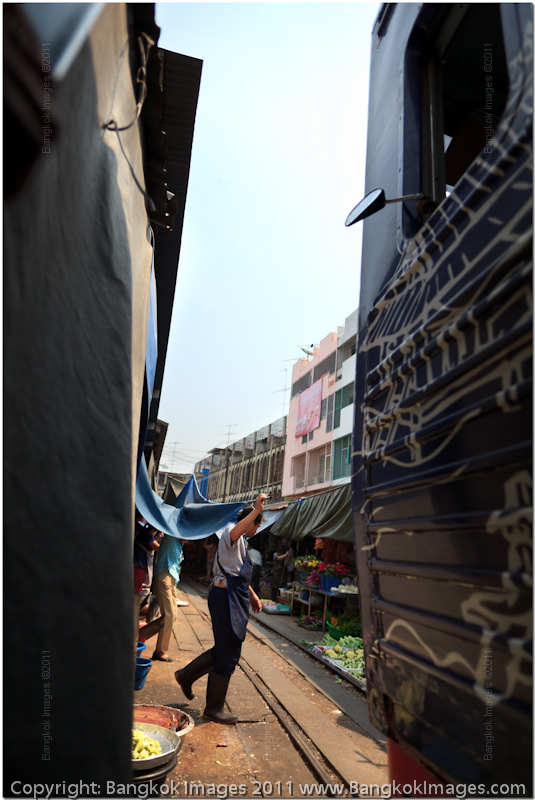
Canon 5d Mark II, Sigma 20mm F1.8 EX DG @F2.8 1/2000th ISO 100
This is the back end of the train, which will soon be the front end when it heads in the opposite direction. See the other photographer capturing it going by?
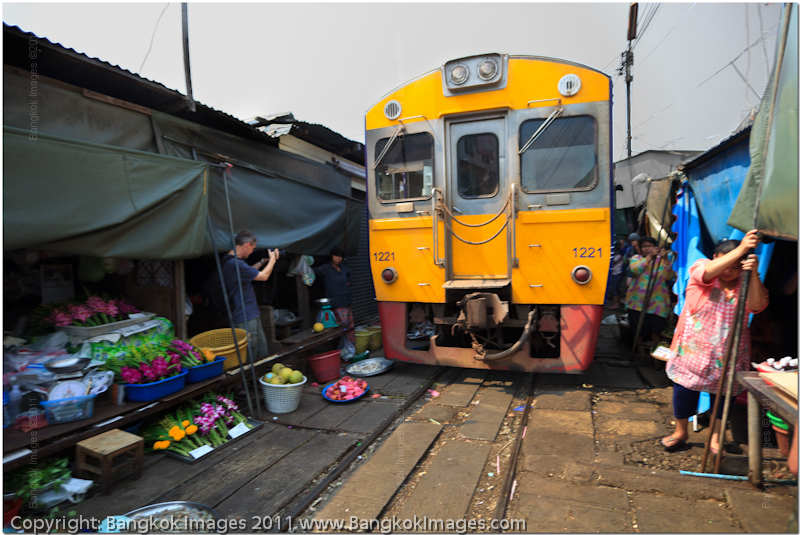
Canon 5d Mark II, Sigma 20mm F1.8 EX DG @F2.8 1/500th ISO 100
Less than 3 seconds after going by the awnings are going back in place and business continues.
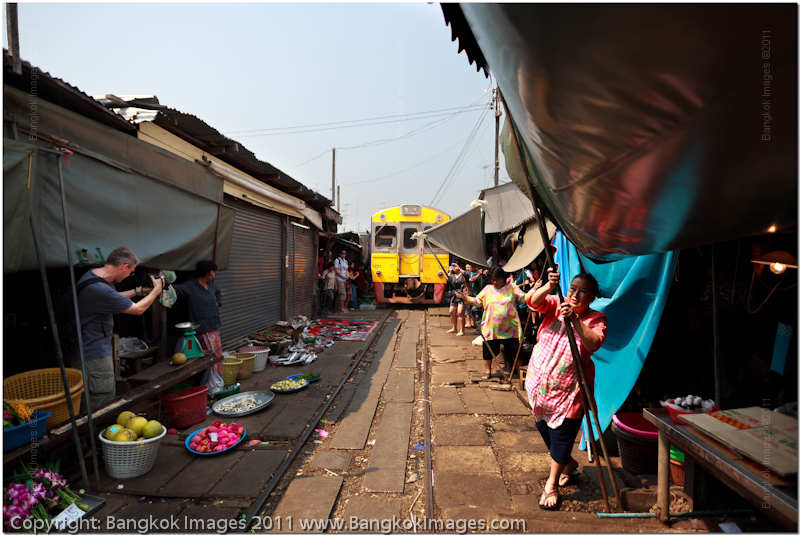
Canon 5d Mark II, Sigma 20mm F1.8 EX DG @F2.8 1/1250th ISO 100
In less than a minute it’s business as usual!
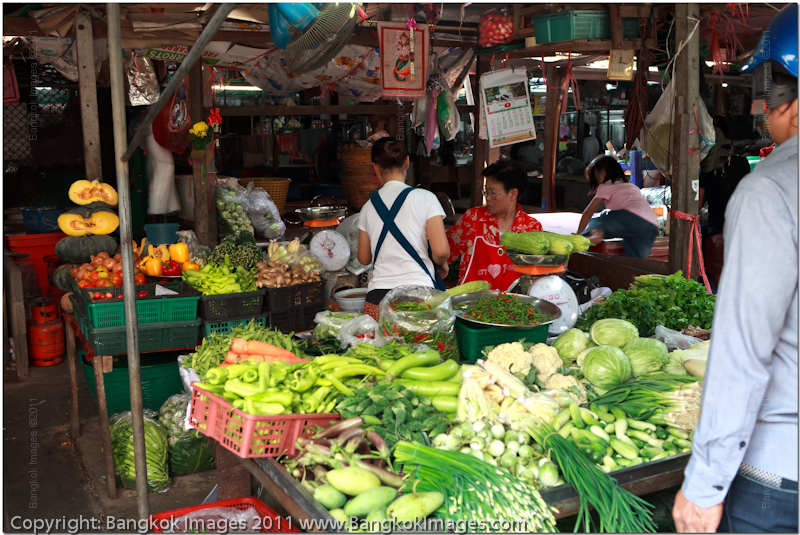
Canon 5d Mark II, 24-70mm F2.8L USM @F5.6 1/40th ISO 400
I really enjoyed this short outing. Samut Songkram is less than 90 minutes outside of Bangkok traffic permitting, and the train station is easy to find. Just feed the coordinates I provided above into your GPS and let it direct you to the parking area.
I’m usually not really fond of Thai street markets, after all they’re a common sight anywhere in Thailand. But how many have a big locomotive coming right down through the center of it seven times a day? Fun!
RAM Explained *menu
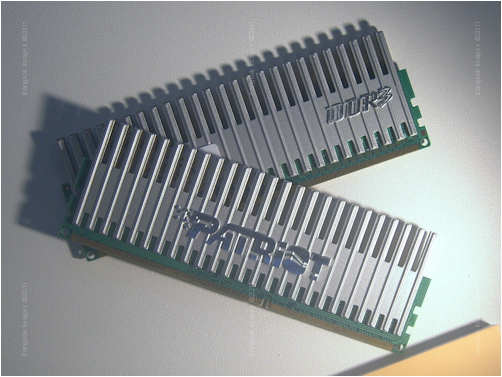
There is always a bit of confusion concerning how much RAM (random access memory) is needed and how much your system can use. In this short article I’m going to try and detail enough information so you can evaluate your own system’s needs.
With the price of RAM at all-time lows, increasing your RAM ‘may be’ the least expensive performance gain you can get from your system. Let’s look at some things we should know:
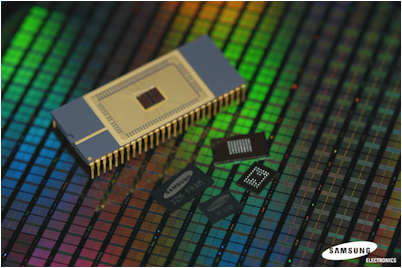
It helps to first know a few things concerning RAM (Random Access Memory):
a. An SSD is faster than a Hard Drive, RAM is faster than an SSD. All three can and will be used when processing images or executing other programs. The key to determining how best to distribute your resources is in understanding when your operating system and/or program is tasking which resources.
b. How much RAM you can access is limited in an x32 operating system. An x32 OS, depending on the BIOS of the machine it's installed on, can use from 3 to 3.2gigs of RAM. Any amount of RAM over this amount isn’t used. x64 OS's are limited too, but way beyond what ANY current system can hold.
c. RAM comes in different speeds, but the default speed for DDR3 RAM used in desktop is currently 1033. Faster RAM is nice, but you'll need a BIOS which supports RAM profiles or specific RAM settings. Most support specific RAM settings but this is beyond "easy" for the average person, while RAM profiles are very easy for everyone.
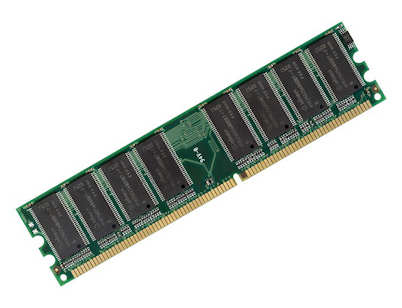
RAM usage in a system is affected by:
- The program being used and how it's programming executes instructions. It's a mistake to think that since you have a 20mb image, it only needs 20mb of RAM to process that image. If the RAM is available, an imaging program will often use all available RAM to process an image, and still need to write to a 'scratch disk file' of 20-50gb or more. Without knowing or understanding how image software is programmed we won't know the specifics of how/why, but it's enough to know it does.
- How many programs being used. For instance, the more tabs in a browser we use, the more RAM the browser uses. If you run Lightroom, Adobe CS5, Outlook (email), a browser, a torrent client, Windows Media Player, the Operating System, and whatever else you run.. it uses a lot of RAM. More RAM allows you to run more programs at the same time without slowing the machine.
- RAM usage isn't constant. RAM use is dynamic, as you perform certain tasks with an open program, open close files, open/close programs, your RAM usage will change.
- A RAM usage monitor only shows you how much RAM your system is using then with all its current restrictions/options.
- Your operating systems has a memory manager. The history of memory managers is very interesting. This is a matter of programming and they've evolved and become much smarter over the years. Memory managers assign RAM to a task on request, and then (ideally) release the RAM when the task is finished. "Memory holes" are when not all of the RAM is released as it should be. This is why old XP (and previous versions of Windows) machines needed frequent rebooting to maintain maximum performance. With Vista is got much better at eliminating memory holes, with Win7 that much better again.
Win8 will improve memory management even further. A memory manager basically looks at how much memory your system have, how much memory your OS overhead is using, how much memory your programs ‘must’ have, and then distributes available memory trying to keep all programs as well supplied as possible. You might only be using 2gb now, but if you install 4gb, or 8gb, or more, your memory manager will see this and task your RAM more, and your SSD/HDD less thereby greatly enhancing the performance of your system.
- Some programs (CS5 Photoshop for example) allow you to set the amount of system RAM (memory) it uses. This works in concert with your operating system memory manager and is a very advanced function. You won't see this option on many programs because of this.
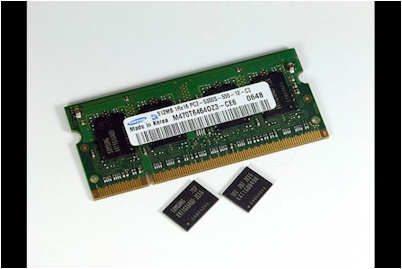
As you read this, you can see that many things affect RAM usage, and that the more capability you have, the more the operating system, memory manager, and programs will use. RAM is faster than an SSD which is faster than a HDD.. Each has different limits and each has different cost factors. When building a system you need to consider these limits and cost factors to get the best performing system for the least amount of money.
Some additional facts concerning RAM usage:
- Every operating system uses a “page file” by default. A page file is a portion of your hard drive or SSD you set aside for the programs to use when executing their tasks. This default size is set by the OS depending on how much RAM you have and how much HDD/SSD space is available, but frequently is 20-50gb in size depending on the amount of RAM in your system. By default Windows assigns a page file 1.5x the size of your RAM. You can up that manually to 3x. This is simply a section of your HDD/SSD the operating system uses ‘in place’ of RAM when it needs more RAM.. which is almost all the time. You can stop this page file from being used, or allow it to use more of your HDD/SSD up to the 3xRAM allowed.
- Imaging programs like Lightroom, Photoshop CS5 and most others.. also use a “cache file” for their RAM overhead much like the OS uses a page file. You can often set which drive and alter the default size in the preferences menu.
- Imaging programs like Photoshop CS5 also allow you to set a “scratch disk” and alter its drive and size.. this is used for image overhead and not the program overhead, though depending on the programming of the imaging software or plug-in, this line can be very murky.
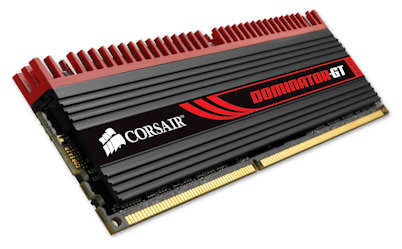
This gets complicated trying to understand because your OS’s page file, your imaging programs cache files, and their scratch disks all interact.. lots of good reading on this topic out there.
Now.. considering all of the above.. A system will easily use almost as much RAM as you can afford. RAM being the fastest of all memory in your computer affects performance in a huge way. So, the more RAM the better, to an certain point. It’s also helpful to designate your fastest SSD/HDD for cache file and scratch disks.. the faster they are, the better performance. When designing a system, it’s all about knowing (having experience) with certain programs (or types of programs), how they use RAM, and then balancing the system RAM, SSD, and HDD types/amounts, percentage of tasking, and cost..
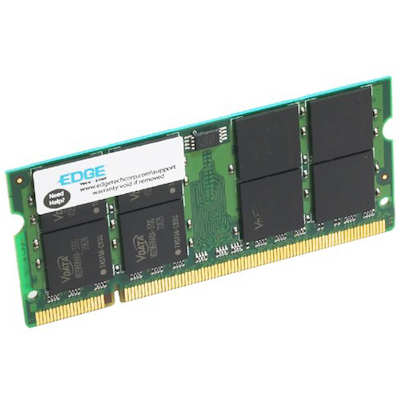
Depending on the above paragraph, these ‘general’ guidelines apply to ‘most’ people:
- Use a x64 OS for your next system. x64 drivers and support for modern machines are just as readily available as for x32. x64 allows the OS to recognize and task more RAM.
- Buy the fastest SSD’s and storage drives you can afford. You’ll realize their performance benefits across the board on every task you perform.
- How much RAM? Win7 machines should have a minimum of 4gb. Vista 2gb but will greatly benefit from 4gb, a very noticeable difference. For most gaming 6gb of RAM will get you to the “point of marginal returns”, for most image processing 12gb, and light to moderate video rending 24gb, and heavy video rendering 48gb+. The “point of marginal returns” is an economic term which is basically saying you’ll see significant performance gains as you add more, but there comes a point where adding more reduces the gains to a smaller amount which makes you stop to consider the cost exceeds the value of the gain.
- Of course, even an imaging system will benefit from 48gb+.. it will just access its page file, cache, and scratch disks less often. But from a user perspective you’ll see/feel less speed improvements on average after 12gb.
Photography News of Interest *menu
Are you a Blue Oval Fan? Ford has been in business now 108 years and over these years has collected millions of images. For the first time, a new site called www.fordimages.com will make these images available to be licensed. There are currently 5000 such images available with 10,000 scheduled by this time next year. Some images are for sale signed by famous historical figures like Carroll Shelby, Dan Gurney, and others. I can’t wait to see the galleries!
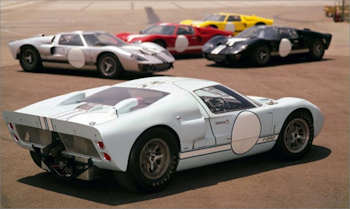
Digital Photography Review posts and excellent in-depth review of the Olympus E-5. If you’re interested in this camera you’ll want to read their great review.

Sigma announces a price drop of their new 70-200mm F2.8 EX DG OS HSM lens. It’s now priced at $1399, down from $1699.

An 8-year-old’s photography is attracting attention. Landon Bailey is doing pretty well with local contests.

Dr. Green Elementary came up with an interesting experiment for their 2nd grade class, combining math with photography into several fun filled projects that introduces these kids to technology.

Readers Submissions *menu
Steve
Here are a few images of life on the river taken on a boat trip from Battambang to Siam Reap. We traveled along the Sangker River which empties into the Tonle Sap Lake. The scenery along the river is spectacular, we passed floating villages & went through mangroves. In the mangroves our rudder got torn off, and we had to be towed by a smaller boat (Photo) turning a six to seven hour journey into ten hours. The Tonle Sap Lake is Asia's largest freshwater lake.
Flooding during the rainy season each year reverses the flow of the Tonle Sap River and triples the surface area of the lake, covering forest areas, sometimes you can see just the tops of trees in the water. 75% of Cambodia's inland fish come from the lake & approximately 3 million people live around it.
Khunklit.








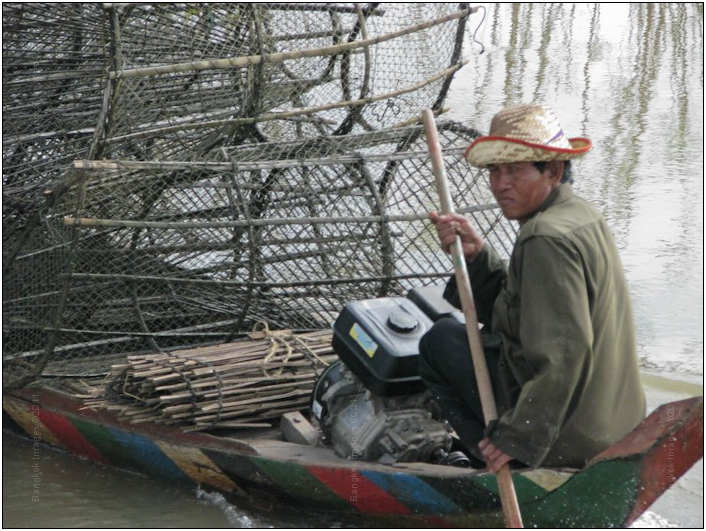
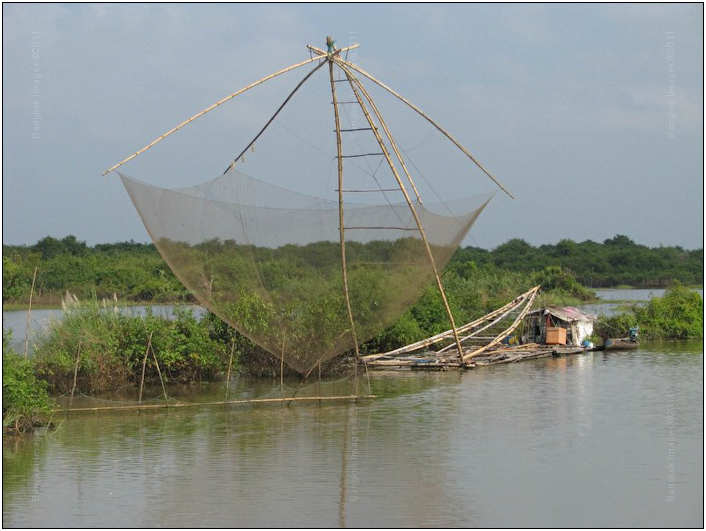
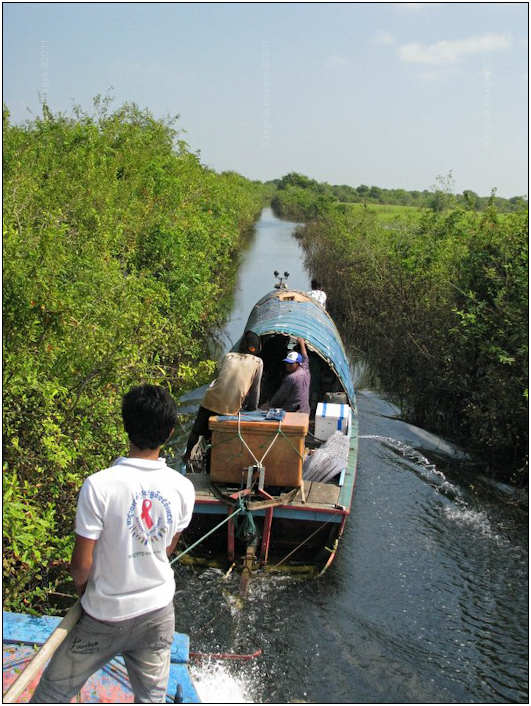
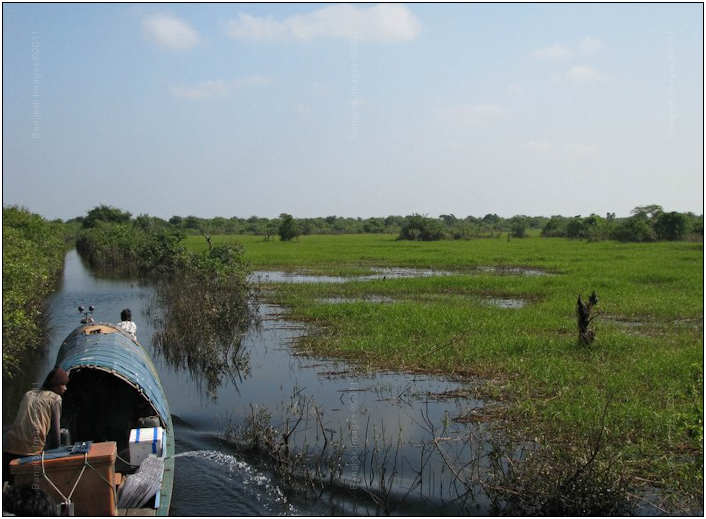
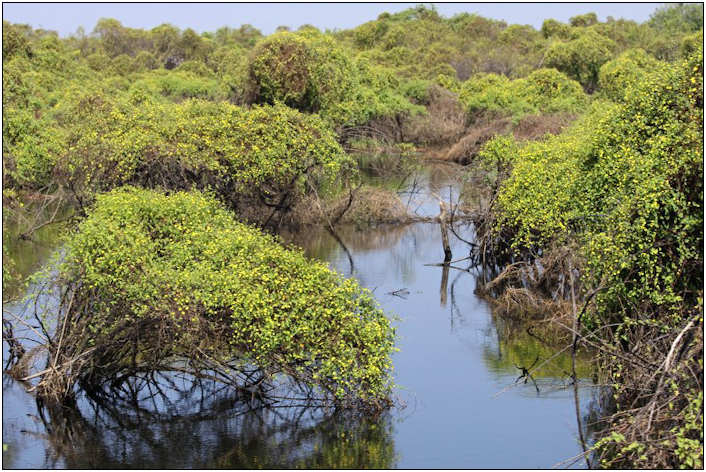
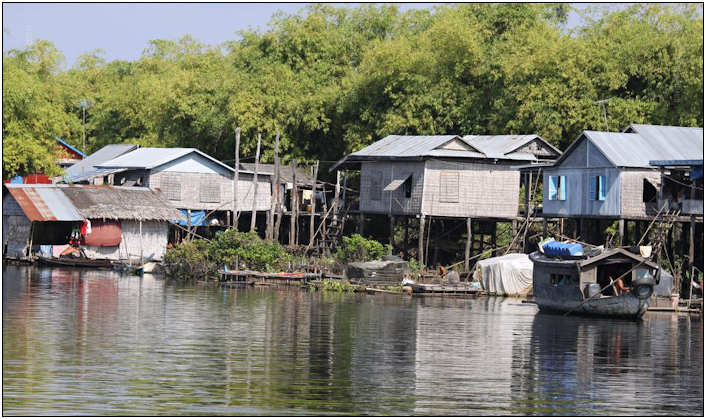
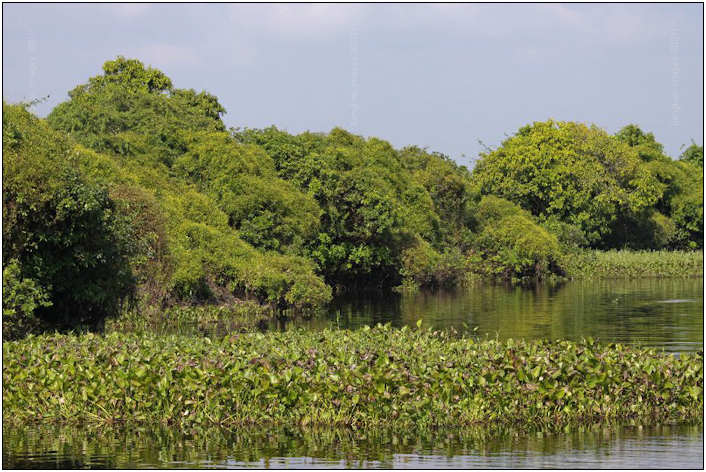
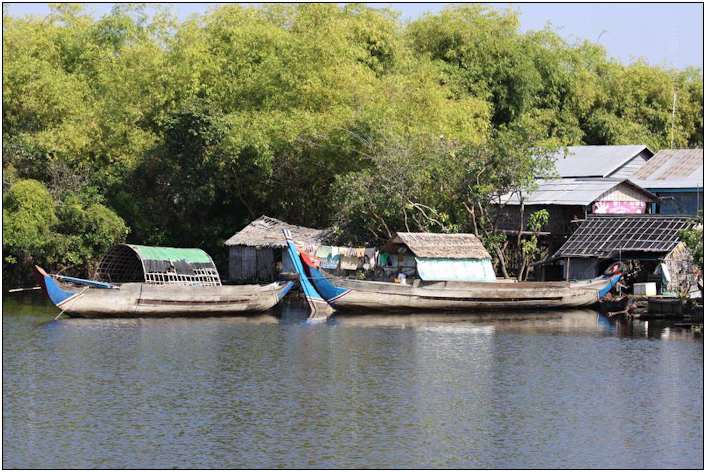
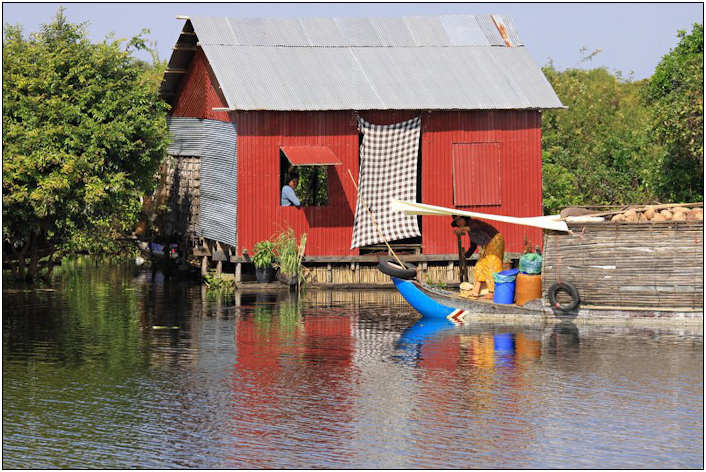
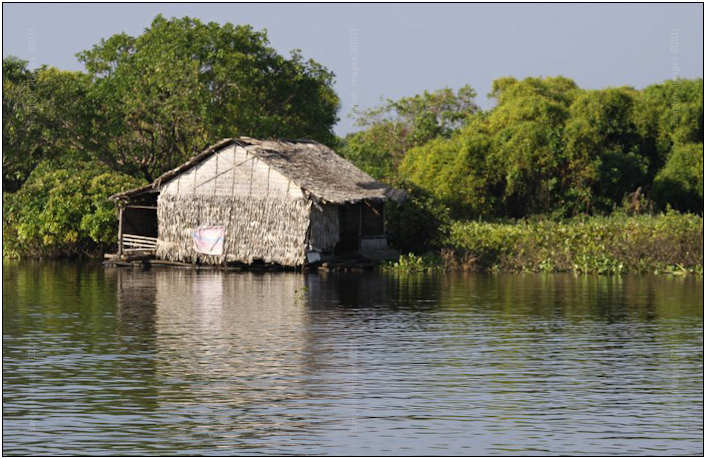
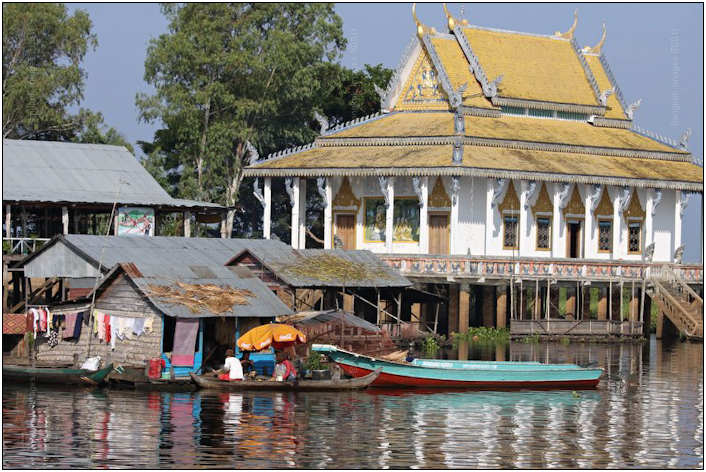
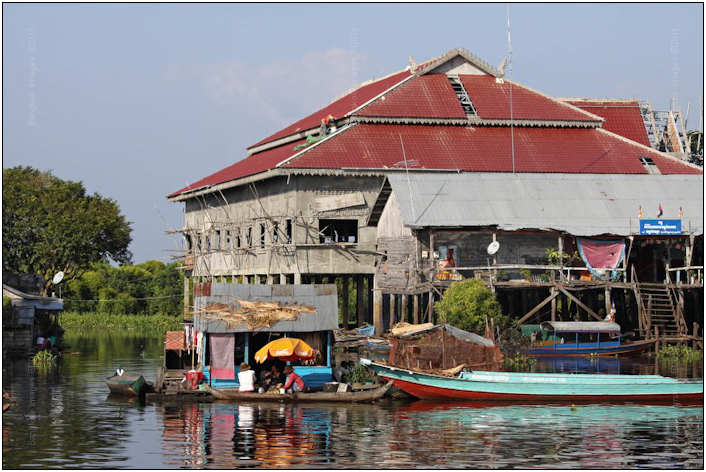
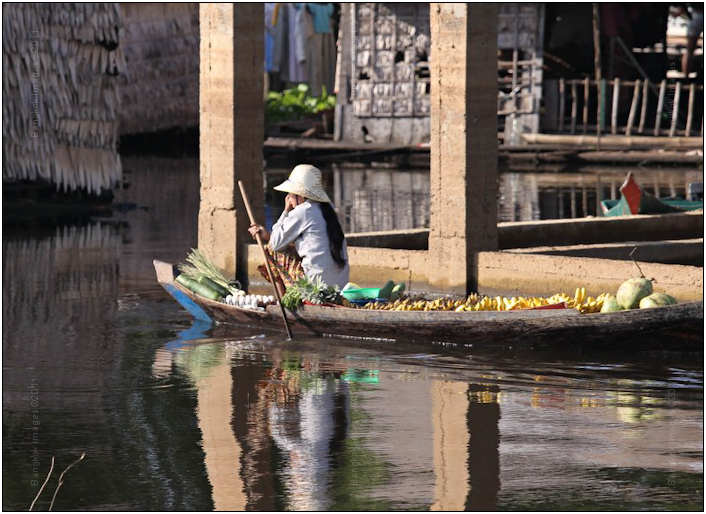
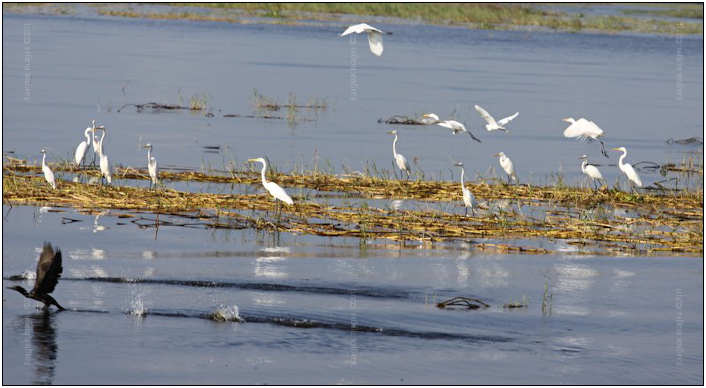
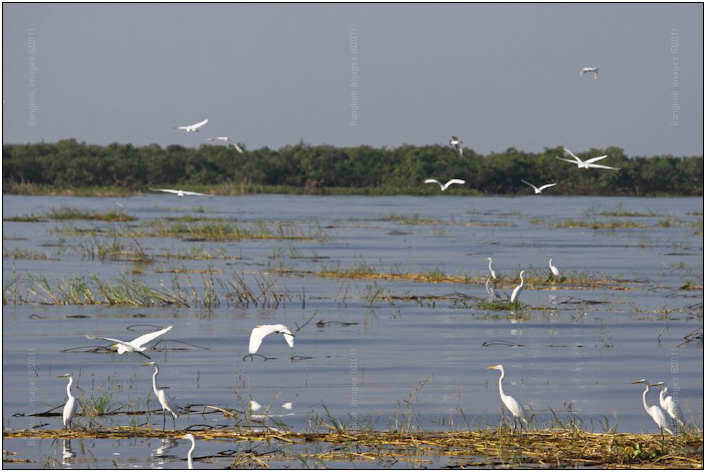
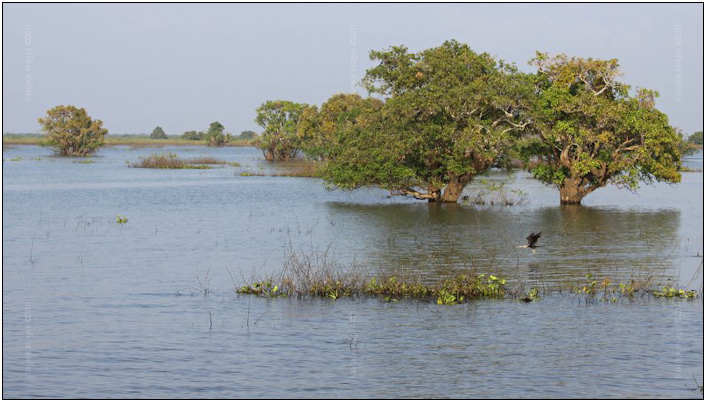
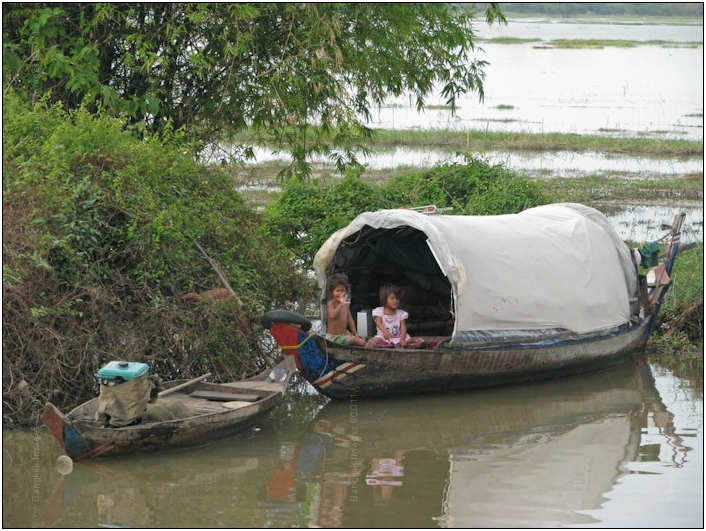
Khunklit –
WOW! These are great images that really well represent Cambodia. I sure wish I could talk you into putting a feature together with images like these. Let me know if I can assist you in doing this. I really think a good many readers are interested in Cambodia, especially life on the water which so much of Cambodia is about. Really great stuff!
Steve
I suspect the readers submissions will be a highly anticipated section of this column and I encourage anyone with photographs and travel accounts they'd like to share to please send them to me at: info@BangkokImages.com
Readers Questions *menu
BKKSteve,
Is there a imaging software that ‘does it all’, or are we stuck with using many applications? What do pros do? Is there a strategy we can grow with as amateurs that makes sense? I’m currently using ACDSEE and while it’s nice, I find I often want to do more.
Luke
Luke –
This is a great question. With digital photography, software as much as our actual camera equipment is of equal importance. Let me run this concept by you first, and then we’ll talk about the software which supports the concept.
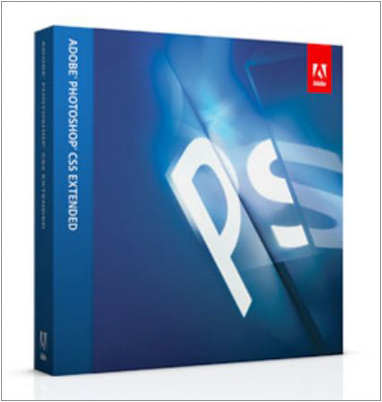
Your biggest cost involved with photography is your time spent on the learning curve. This time will almost always equal more in lost value, than the cost of your camera equipment and the cost of your software applications. Lost time should be avoided if at all possible.
With this mindset, formed from years of experience with myself and observing others, I think the best thing a beginning or even intermediate photographer can do, is to standardize their software based on the market leaders in image processing. Small name imaging products, or the free products we get with other applications or our cameras, generally cost us quite a bit through lost time. Really, it’s the same with training of all types in all fields.
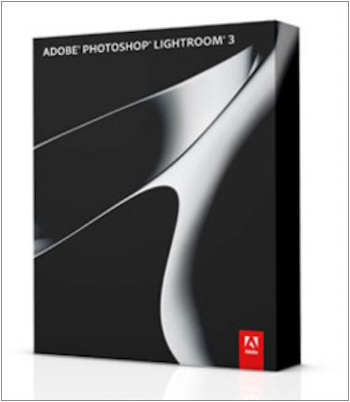
I teach Adobe Photoshop Lightroom at most levels of my workshops. I personally use Adobe Photoshop Lightroom. Lightroom combines the most of the important features from Adobe Photoshop which photographers need, into a top/down easy to use user interface with excellent image database capabilities, a print manager, and even a web interface. Adobe Lightroom allows most amateurs to accomplish anything they wish with their images, while allowing them to grow with the UI and product at the same time. It’s for these reasons why Lightroom is now the most popular piece of imaging software. It’s become a standard.
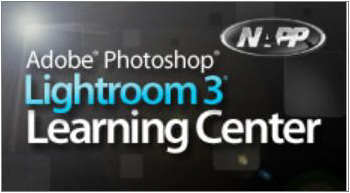
Also consider that the most popular applications will have tons of support in the way of on-line tutorials and web videos.

Standards lend themselves well to transitioning into more advanced software. As you progress with Lightroom and start looking for more advanced features, the logical choice is Adobe CS5 Photoshop. Expensive for sure, but the most complete imaging software application ever. It stands way alone at the top of the industry with no serious challengers. Learning Lightroom and/or Photoshop is an excellent value for your learning curve time.
This is what most pros do. They’ll have a raw processor and database organizer like Lightroom and/or Phase One’s Capture One Pro 6, AND Adobe’s CS5 Photoshop. For more specialized functions such as noise removal, skin softening, and much more.. they purchase individual plug-in’s which often work with Lightroom, but always work with Photoshop. Any serious imaging company supports Adobe products. They must to stay alive. This benefits the consumer in a huge way.
So yes, most professionals maintain a ‘suite’ of imaging software, carefully tailored to their own needs and personal workflow. Few professionals have identical needs and workflow, but we all use a raw processor and Adobe CS5 Photoshop. Most of us use plug-ins. Others use studio management software, green screen (chromakey) engines, software with video support.. the list is endless and it’s highly individual.
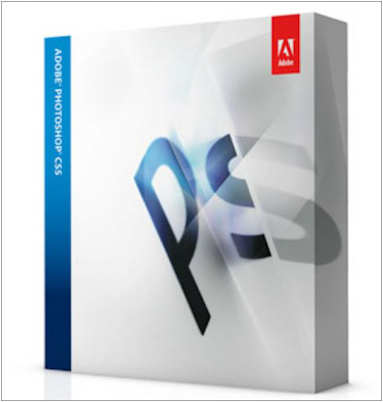
But as an amateur photographer you can position yourself very well by starting off with Adobe Lightroom knowing that when you reach that point where you’ll want more, yours skills in Lightroom will translate well to Adobe Photoshop CS5, and that both will remain useful to you at any level of photography.
I hope this helps.
Please submit your questions to info@BangkokImages.com All questions will be answered and most will show up in the weekly column.
A Snapshot of Bangkok Images Week in Review *menu

This week we had two workshops which kept me busy as there was a lot of planning for these two. I also found time to get out with a friend to a local destination and that was a lot of fun. I’m continuing to enjoy the cool season.
Positive comments continue to pour in about our new look and much faster more interactive site. If you haven’t already checked it out, visit www.bangkokimages.com
to see my latest galleries, share your own galleries, participate inthe forums
, and scour our large repository of photography related articles. The “What’s New”
page continues to be very popular with almost daily updates and interesting content.
Dana has submitted a new Thailand Photo Stories titled "Memory Pearls" which is a fun read. If you're a Dana fan I think you'll find his Thailand Photo Stories are all real gems.
Infocus Blog, Winter Time *menu
Recently I’ve realized something. If you’d asked me what was my favorite time of year in Thailand I would have said from mid-December through the end of February. And indeed these are the coolest most comfortable months. What I realized,
is that Thailand being so hot and humid most of the year, when we get a few cool months I just naturally assumed they were my favorite months.

Canon 5d Mark II, -70-200mm F2.8L IS USM @F8 1/640th 200mm ISO 100
I was wrong. There is much more to your quality of life than the reading on a thermometer. Looking back through my archives and doing a bit of filtering, I noticed the winter months were my least active photographically. In other words, I used my camera
the least during the winter months.
This happens for several reasons. First, despite it being the cool season, it’s also my slow season for workshops. I’ve yet to figure that one out. Would you believe my highest months for workshops are the April/May/June months when it’s
the hottest and most humid? These are the months where I work the most.
But primarily, I don’t pick up my camera during the winter months because I’m not inspired. The skies are grayish and bland, fields are empty, and I find very little to inspire my creative side.
So when am I the most active? By 5:1 I’m more active during monsoon season than the next closest season. It’s during monsoon season when the winds clean the skies of the gray and dirty pollution, and in the next instant fill with heavy dark
thunderclouds, often followed by breaks in the clouds which let streaks of sunlight and even rainbows filter through.
Monsoon season is when the fields of rice are at their fullest, when the rain forests are most green and brimming with life, and most of all when the weather isn’t predictable. You never know what the day will bring. I often find myself heading
out to a certain location just to be there when the weather changes. In contrast the weather hardly changes at all from mid-December through the end of February.
I still enjoy the winters because I can walk around all day and be comfortable, but I very much am looking forward to the next monsoon season because this is when I’ll pick up my camera the most. How about you, what seasons inspire you the most?
Until next time..




